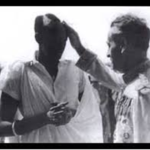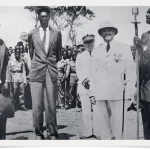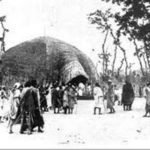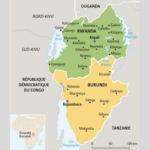The Religious Complex And The Cult Of The Dead
The Rwandan traditional systemrequires the complex of religious, magico-religious beliefs and practices. This is for two reasons.
In the first place they are related to the pattern of social relationships among living members of the community and support the social order. Secondly, Christianity spread to a very considerable extent in a comparatively short time, replacing, in the younger generation, the traditional beliefs and practices The Religious Complex And The Cult Of The Dead . Although this widespread adoption of Christianity does not imply necessarily that traditional practices were abandoned, it does mean that new opportunities had arisen. The published data on many aspects of the organisation of the traditional religious system in Rwanda is inadequate for complete sociological analysis. Nevertheless some of the basic beliefs and practices are important in the context of the present analysis.
Independent of social cleavages or regional variations, all Rwanda recognise a supreme being, Imana, the creator. Although. Imana figures widely in the different myths regardingthe origin of the world, of men, of Rwanda, its King and itsinhabitants with their different occupations and skills, heis not the object of an organised cult. His name is oftenused in greetings and his association with life is recognized in the names given to children. Imana, linked in myth with the origin of Rwanda, is not a national God, but every night he returns to Rwanda, the place he entrusted to the Mwami, his visible representative and the guardian of his creation. In this way the concept of God entered the pattern of traditional social relationships in as much as it gave the seal of God’s approbation on all the Mwami’s words and actions. Rwanda was linked with God through the person of the Mwami. However there was no cult to Imana either through the Mwami himself or at the level of the lineage or individual. Since the social order was believed to be maintained by Imana, both its form and the Mwami’s administration of it was sacrosanct. Since Imana gives life and is therefore good, there was no need to appease him through cult offerings.
Life itself is the linking by Imana of an invisibleumwuka to the body at the moment of conception. For this he needs a little water, to mould the two together. It is for this reason that the Rwanda pours a little water in a bowland places it next to his bed. While this cannot beinterpreted as an offering to Imana, nevertheless theconcept had a definite place in daily life. This wasparticularly important in that Imana was closely relatedto procreation and thus put men continuously in the presenceof the supernatural.
Death occurs at the moment when umwuka leaves the body and is transformed into a spirit, muzimu (plural bazimu).
The body has served its purpose, that is to say it has contained the umwuka and procreated a new bodily form for the umwuka, i.e. the next generation. The body, having served itspurpose, is rather casually disposed of. Thus life is what has been received from one’s parents to be passed on to one’s children. The concept of umwuka was directly related to the actual form of the lives of forebears, including the observance of customary patterns of behaviour. It therefore constituted a sanction supporting the observance of customary norms. Non-observance of customary norms was liable to punishment by the bazimu during the life of the transgressors.
A state of happiness in the afterlife was not related to life on earth neither did it depend on offerings made to the bazimu. All Rwanda, with the exception of those who are initiated into the Ryangombe cult, go to the same place of abode of the bazimu, where there is no further distinction as to status, rank or any other differences. The fact that punishment of infringements of tradition was not postponed to the afterlife but was always immanent constituted another sanction supporting observance of the traditional social patterns. Thus concepts of God, life, death and punishment were all directly related to upholding the established social system.
Against this background we must now see the cult of the bazimu which constituted the most universal part of the religious practices of the Rwanda. At death the umwuka was transformed into a muzirnu whose existence was neither pleasant nor unpleasant. The Rwanda did not restrict the cult rendered to the dead i.e. bazimu, to their deceased ancestors, neither was it, where ancestor cult was rendered, restricted to father, grandfather or lineage heads, in this otherwise patrilineal society.
The Rwanda distinguish two categories of bazimu who have separate cults. These are the bazimu of the ancestors and those who are strangers to the lineage. However the cult of deceased relatives included both agnatic and cognatic kin of both sexes. A second distinction was made between the benevolent and malignant bazimu. Benevolence implied that no harm was to be expected from them as long as a person observed tradition, which included offerings to certain categories of deceased persons. The offerings themselves were more in the nature of a token than in the nature of deprivation of an economic good. The bazimu were transformed umwuka and did not need any material goods for their well-being. They only wanted to be remembered. Therefore some grains were offered or even a sheep but it was believed that it sufficed to kill the sheep so that the sheep’s mwuka could be received by the muzimu while the people who made the sacrifice or offering kept the meat. Birth’s observations on the nature of sacrifice as necessarily entailing economic aspects do not seem applicable in the Rwanda context.
As soon as a person built his homestead he needed an ancestor as protector to whom he would regularly make offerings. Bazimu protectors could be either father,grandfather, mother, grandmother, father’s brother or father’s sister. There was however no definite pattern or system as to which ancestor within this group should become the protector of a particular homestead. The principal protector was not chosen by the householder nor by the lineage but by the diviner, who was not necessarily a kinsman and who was most often a Hutu. However there were Tutsi diviners. Itis unfortunate that no data are available as to possible patterns in resorting to a diviner. The diviner might appoint any of the deceased close relatives, male or female, as the muzimu protector of the new homestead. In the case of polygynous marriages a new and different ancestor wasappointed by the diviner for the new homestead of each wife. All were chosen from the husband’s relatives. Asmall hut would be built as an ancestral shrine and gifts were regularly made. Normally the head of the household had exclusive rights of access to the shrine. The rugo head would also participate annually in the cult rendered to the ancestor at the inzu level or in the peripheral areas at the umuryango level. Next to this principal protector, the diviner, when asked in times of special adversity, might indicate that another muzimu protector was needed and would again indicate to whom of the ancestors cult should be regularly rendered.
All these ancestors within the cognatic descent group were considered to be benevolent, since they were concerned with the well-being of living members, but they could be ill-tempered and were supposed to cause trouble if the person had had disputes with that particular ancestor during his lifetime. Now that he was a muzimu he could argue from a position of strength unless submission was shown through special and frequent offerings. It was particularly and most frequently to these ancestors, who had to be appeased, that cult wasrendered. This constituted a continuous reminder to the living of the advantages of living in peace with one’s lineage members and those who had married into it. It also enforced the authority of the older generation who were closer to becoming bazimu and might be appointed as the protector ancestor by the diviners.
Thus the descent group ancestor cult generally reinforced and strengthened good relations firstly and most importantly among that group of close kin who were eligible to become the umuzimu protector and secondly, among the wider group of lineage members, and their wives. In this sense the beliefsand practices of the bazimu cult reflected the areas of relative intensity in relationships between kin. It moreover strengthened the authority of the rugo, inzu or umuryango head, as he had control over access to the principal ancestor- protector. However on the other hand the potential retribution of the bazimu limited the exercise of his authority within the bounds of what was accepted or customary. Regional differences as to the level on which ancestor cult was rendered are correlated with the greater depth of the kinship structure in the peripheral areas.
In some cases one can build a strong case for explaining the character imputed to the descent group ancestor on the basis of ritual, jural and economic dependence of living members on him, i.e. in terms of succession and inheritance and has stated that this approach is not applicable or successful when applied to extra descent group ancestors.
In Rwanda the form taken by the ancestor cult seems only to be related to patterns of succession and inheritance in a negative way. First of all there is no systematic pattern in the appointment of the ancestor by the diviner, who is himself not a lineage member. This conforms to the absence of any fixed pattern in succession in that the father wouldappoint one of his sons as successor on the basis of personal choice. Secondly, the pattern of behaviour of the muzimu is related to previous good or bad relations towards the person before he was transformed into a muzimu, and as suchserved to promote good relations and to check competition between members of the lineage. This was of particular importance because of the lack of a fixed pattern of succession, resulting in competition and friction, into which certain persons married into the lineage might also be drawn. In this way we can say that in Rwanda the nature of the ancestor cult, relating to this particular group of bazimu, is concomitant with the system of succession toauthority in Rwanda. Inheritance does not seem to be a relevant factor as all male heirs received equal shares except for the successor who received an additional share if he still had special charges, e.g. the care of unmarried brothers.
However the cult of the dead was not confined to the above mentioned categories of close kin. The diviner could and often would indicate, when consulted in times of special misfortune,that a particular extra descent group muzimu needed to be placated. This could be a deceased affine with whom a person had had a quarrel, a neighbour or a patron or client, with whom a person had had an unsettled dispute when he died. This would be especially if he had died in abnormal circumstances and“abnormal ” were considered to be allcircumstances except at home in old age. If something went wrong with the cattle and their owners had had clients whom he had not treated well, and who were now bazimu, the diviner would tell the cattle owner that the clients were now being revengeful and demanded to be appeased. This was a sufficiently well established pattern to have resulted in a special name given to a client’s muzimu.
However the categorization of bazimu as friendly and unfriendly was not directly related to intra and extra descent group bazimu. All ancestors were supposed to be protectors unless one had had quarrels with them. Extra descent group bazimu had to be feared if one had not treated them well during their lifetime. All other bazimu did not enter the cult of the dead, they were neither friendly nor unfriendly. Hence the behaviour pattern of the bazimu seems primarily related to good or bad relations between agnates, cognates and affines, between patrons and clients and between neighbours.
Thus the cult of the bazimu supported the maintenance of co-operation in social relationships at different levels and sanctioned the socially accepted patterns of behavior of which the bazimu were thought to be the preeminent protectors, not only within the lineage but in all face to face relationships. Thus the cult of the bazimu reflects the relative importance both of ties within the kinship structure and of other social relationships in Rwanda. There are variations related to differences between Central Rwanda and the peripheral areas where, for instance, no cult to muzimu was rendered as there were no patron – client relationships.
The missionaries forbade all forms of ancestor cult.The missionary reports mention that reported or confessed transgressions were punished with public penance and that, before being accepted as a catechumen, the ancestral shrines had to be demolished.Access to specific data, which unfortunately do not exist, would be required for an evaluation of the impact of Christianity on the cult of the dead and on its function in upholding the traditional patterns of social relationships. However the conclusion seems justified that the cult of the bazimu was directed towards preservation of traditional patterns of behaviour while Christianity was not. Moreover punishment was no longerbased on transgressions of traditional patterns and effectiveduring one’s lifetime but based on transgressions of a newcode and postponed into the afterlife.
https://uk.amateka.net/the-religious-complex-and-the-cult-of-the-dead/https://uk.amateka.net/wp-content/uploads/2019/11/indaro_abazimu.pnghttps://uk.amateka.net/wp-content/uploads/2019/11/indaro_abazimu-150x150.pngSocial & cultureThe Rwandan traditional systemrequires the complex of religious, magico-religious beliefs and practices. This is for two reasons. In the first place they are related to the pattern of social relationships among living members of the community and support the social order. Secondly, Christianity spread to a very considerable extent in a comparatively...BarataBarata rpierre@ikaze.netAdministratorAMATEKA | HISTORY OF RWANDA




